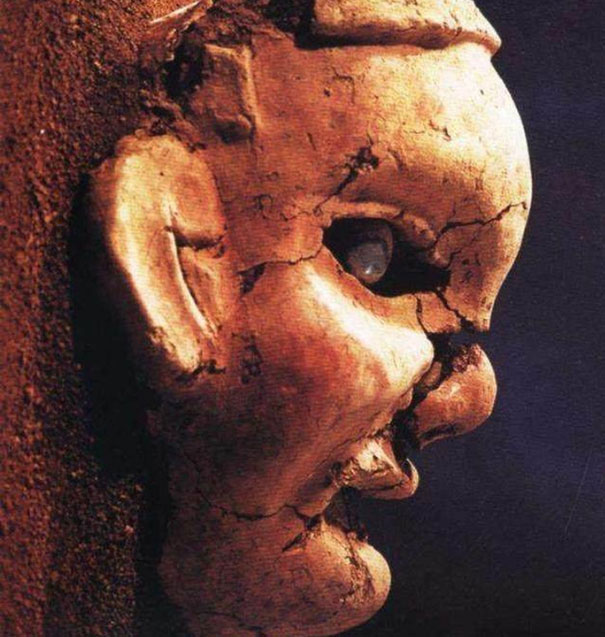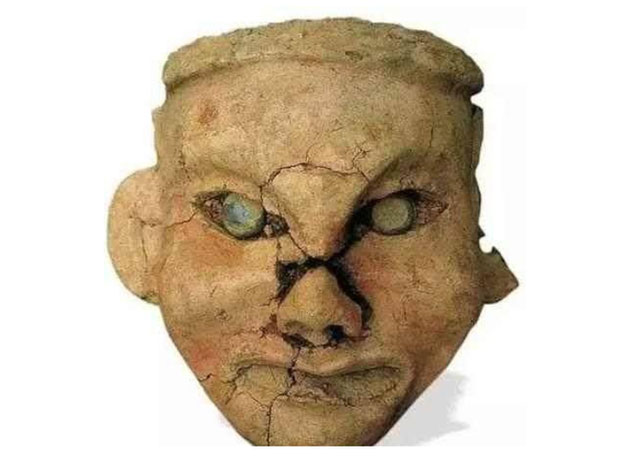'Resolving sadness' in ancient tomb, expert gets chills when seeing face under the ground
More surprisingly, this "face" was later recognized as a national treasure and banned from leaving the country for exhibition .
In the 1980s, Chinese archaeologists discovered an ancient tomb containing many archaeological relics in the Niuheliang area of Chaoyang City, Liaoning. Here, they accidentally found a national treasure that could be said to have rewritten Chinese history , so valuable that it was not allowed to be exported for exhibition. What is worth mentioning is that this treasure was found in a very ironic situation.
Specifically, in April 1981, the Liaoning Province Cultural Relics Survey Team heard that ancient tombs were often excavated in Niuheliang. Many people even found jade artifacts. In 1983, archaeologists Sun Shoudao and Guo Dashun led a group of experts to Niuheliang to begin a large-scale excavation.

While going to "relieve himself", an archaeologist unexpectedly found a human head statue under a layer of sand. (Photo: Sohu).
After many days of excavation, the archaeologists did not find any valuable cultural relics and they were exhausted. One evening, when the experts finished their work and began to pack up their tools, an employee wanted to go to the toilet. He went to a secluded place to "relieve himself" and felt a chill down his spine as a face suddenly appeared from the ground. The employee felt something was wrong so he dug the ground to search. He successfully found a ceramic human head.
Excited, he immediately reported to the team leader. It turned out that the ceramic head was actually part of the Niu Heliang Goddess statue . After a period of searching, they were lucky to find the Niu Heliang Goddess Temple, which was nearly 5,000 years old, in the nearby area. This discovery shocked the world as soon as it was announced.

This statue is part of the Niu He Liang Goddess statue. (Photo: Sohu)
According to the memories of archaeologists, when the goddess's head was revealed, they all held their breath, not a single sound was made except the rustling of the brushes scraping the ground. When the statue was revealed, it was also the moment when archaeological history took a new step forward.
The fully restored statue is 22.4 cm high and 21 cm wide. The cheekbones are prominent, the nose is slightly upturned, the lips are wide, and the sharp eyes are mysterious and majestic. On the statue's forehead is a ring, and the eyes are inlaid with round jade with a diameter of 2.3 cm.
The Niu Heliang Goddess Statue is on display at the Liaoning Provincial Archaeological Institute. It is the earliest ceramic goddess statue unearthed in China. It was later designated a national treasure and was banned from leaving the country for exhibition.

The face of goddess Niu Heliang after being restored. (Photo: Sohu).
According to archaeologists, the statue and the temple both belong to the Hongshan culture , a Neolithic culture in northeastern China. It is one of the earliest ancient civilizations in China . Hongshan culture sites have been discovered in an area spanning from Inner Mongolia to Liaoning.
The Hongshan culture's funerary objects include some of the earliest known examples of jade carving. The Hongshan culture is known for its C-shaped dragon statues , animal statues, and human statues (men and women) . The materials used to make the statues were very diverse, but they were mainly made of jade, stone, etc. In particular, bronze and bronze alloys appeared. The tools and techniques used to create these objects remain a mystery to this day.

The C-shaped dragon statue is one of the recognizable symbols of the Hongshan culture in China. (Photo: Sohu)
Like the Yangshao culture, the Hongshan sites provide the earliest evidence of Chinese feng shui. The presence of both circles and squares in Hongshan ceremonial centers suggests the early presence of the cosmological theory of "round heaven and square earth". Feng shui was originally based on astronomy to explore the relationship between humans and the universe.
- Seeing the 'miracle medicine' hidden in the water tomb, as soon as it was opened, the expert's face changed immediately!
- Discover the mysteries of the ancient tomb of Maya
- The skeptical expert went to the secret room hidden in King Tut's tomb
- Excavation of the tomb of Queen Cao Cao's grandson
- The secret of an ancient tomb is 800 years old in China
- Close to the ancient tomb discovered in Saigon
- Discovered 2,000 year old grave in Hoi An
- The 1,500-year-old tomb of 5 creatures confused archaeologists
- The 4,000-year-old couple is in a close posture in an ancient tomb full of gold
- The skeleton of the ancient tomb of War Kingdom disappeared mysteriously
- Discovering a uniquely decorated tomb of ancient Egypt
- Scary discovery about 1,400-year-old 'tomb of ghosts'
 Discovered an ancient centipede fossil 99 million years old
Discovered an ancient centipede fossil 99 million years old Discovered bat-like dinosaurs in China
Discovered bat-like dinosaurs in China Discovered a 200-year-old bronze cannon of the coast
Discovered a 200-year-old bronze cannon of the coast Discover 305 million-year-old spider fossils
Discover 305 million-year-old spider fossils